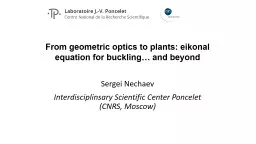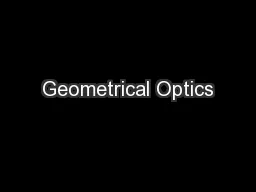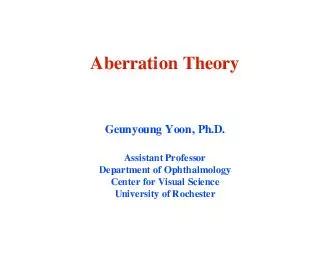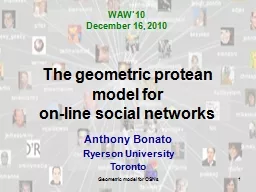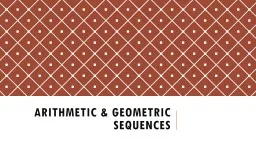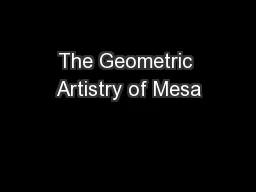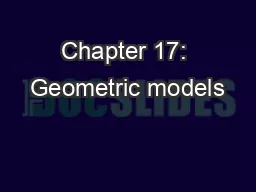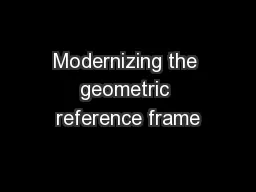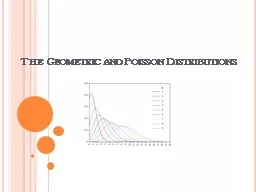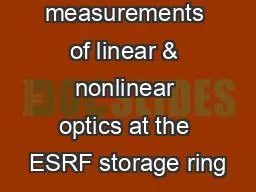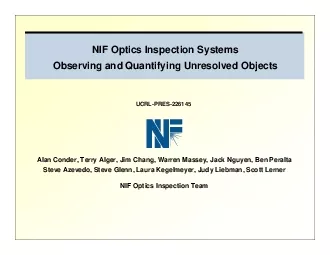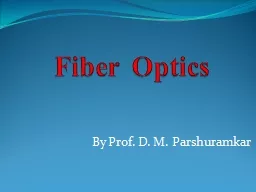PPT-From geometric optics to plants:
Author : tawny-fly | Published Date : 2018-03-12
eikonal equation for buckling and beyond Sergei Nechaev Interdisciplinsary Scientific Center Poncelet CNRS Moscow Lebedev Physical Institute RAS Moscow How
Presentation Embed Code
Download Presentation
Download Presentation The PPT/PDF document "From geometric optics to plants:" is the property of its rightful owner. Permission is granted to download and print the materials on this website for personal, non-commercial use only, and to display it on your personal computer provided you do not modify the materials and that you retain all copyright notices contained in the materials. By downloading content from our website, you accept the terms of this agreement.
From geometric optics to plants:: Transcript
Download Rules Of Document
"From geometric optics to plants:"The content belongs to its owner. You may download and print it for personal use, without modification, and keep all copyright notices. By downloading, you agree to these terms.
Related Documents

